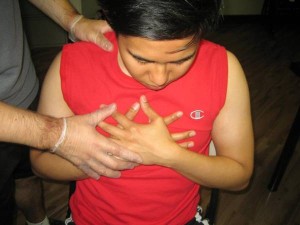If an individual ends up with inflammation on any part of the body after eating blue cheese, it is best to set up an appointment with a doctor since he/she might have an allergy to one or more of its components or ingredients.
https://www.youtube.com/watch?v=E12mE3UfcEg
Blue cheese is comprised of two highly allergenic substances – mold and milk. Most of the signs and symptoms triggered by an allergic reaction are due to inflammation in the soft tissues in various parts of the body. The doctor might recommend allergy testing in order to determine the exact cause of the inflammation.
Cause of inflammation
The inflammation from food allergies is the result of the production of histamine in the soft tissues. Once an individual eats something that he/she is allergic to, the immune system triggers the release of immunoglobulin E antibodies that attack the substance.

If an individual is allergic to mold or milk, the immune system erroneously identifies them as a threat and attempts to fight off the proteins with the IgE antibodies. The IgE antibodies initiate the release of mast cells to produce histamine that triggers the inflammation. Take note that histamine is typically released in the sinus tissue, skin, lung tissue and the tissues that cover the intestines.
Allergy to milk
Milk is considered one of the common food allergens in both children and adults. It is the main ingredient utilized in producing blue cheese. If an individual has a known milk allergy, he/she must avoid all dairy products including yogurt, cheese and ice cream.
Eating even a small amount of milk can trigger an allergic reaction with symptoms such as nausea, diarrhea, vomiting, wheezing, skin rashes, coughing as well as shortness of breath and chest tightness. Most of the symptoms from milk allergy can manifest in a matter of minutes after consuming blue cheese.
Allergy to mold
The blue-colored spots found in blue cheese are mold. If an individual has been diagnosed with mold allergy, eating the cheese can initiate the typical symptoms of an allergic reaction. An allergy to mold is instigated by the airborne spores during the spring, summer and autumn seasons. Inhalation of the mold spores can cause inflammation in the eyes, sinuses and throat. If an individual is diagnosed with mold allergy, he/she must avoid aged cheese, dried fruit and beer.
Severe inflammation
A severe allergic reaction can cause excessive inflammation that can affect the functioning of the cardiovascular and respiratory system, resulting to a state of shock. This severe reaction or anaphylaxis occurs once the whole body reacts to the allergen and triggers symptoms such as dizziness, difficulty breathing, abrupt drop in the blood pressure and increased heart rate. Take note that this condition can be life-threatening and requires immediate emergency care. Once symptoms of a severe reaction start to manifest, call for emergency assistance or bring the individual to the nearest emergency department right away.
